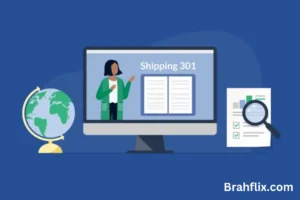Introduction
In the dynamic world of asset management and maintenance, Computerized Maintenance Management Systems (CMMS) play a critical role. These systems help organizations manage their maintenance operations, streamline workflows, and reduce costs. As businesses look to optimize their maintenance strategies, the 7 best free and open source CMMS software options have emerged as viable solutions, offering powerful features without the hefty price tag.
This article will delve into these CMMS tools, providing detailed insights into their features, benefits, and how they can transform your maintenance management processes. Whether you’re a small business owner or part of a larger enterprise, these solutions can help you achieve operational excellence.
Key Takeaways
- Free and open source CMMS software can significantly reduce operational costs.
- The right CMMS can enhance productivity and asset longevity.
- These tools often come with customizable features tailored to specific industries.
- Community support and documentation can help users maximize software benefits.
- Many options provide essential functionalities such as work order management, inventory control, and reporting.
1. Understanding CMMS: What Is It and Why Do You Need It?
What Is CMMS?
A Computerized Maintenance Management System (CMMS) is software designed to streamline maintenance management tasks. It enables organizations to track and manage maintenance activities, optimize resource allocation, and improve equipment reliability.
Key Functions of CMMS
- Work Order Management: Automates the creation, assignment, and tracking of maintenance tasks.
- Preventive Maintenance: Schedules routine maintenance to prevent equipment failures.
- Asset Management: Keeps an organized inventory of all assets and their maintenance history.
- Reporting and Analytics: Provides insights into maintenance trends and performance metrics.
Why Implement a CMMS?
- Cost Reduction: Preventive maintenance can reduce unexpected equipment failures, leading to significant cost savings.
- Improved Efficiency: Streamlined processes minimize downtime and enhance productivity.
- Data-Driven Decisions: Accurate reporting allows for informed decision-making regarding maintenance strategies.
Understanding these foundational aspects of CMMS will help you appreciate the value offered by the 7 best free and open source CMMS software options.
2. Criteria for Selecting CMMS Software
When evaluating CMMS solutions, it’s essential to consider several factors to ensure you choose the right fit for your organization.
Key Selection Criteria
- User-Friendliness: A straightforward interface that simplifies navigation and task management.
- Customization Options: Flexibility to tailor features according to your specific needs and industry requirements.
- Scalability: Ability to grow alongside your organization as demands and needs evolve.
- Community Support: Active user communities that provide forums, documentation, and resources for troubleshooting.
- Integration Capabilities: Compatibility with existing systems such as ERP or inventory management software.
By focusing on these criteria, you can effectively assess which of the 7 best free and open source CMMS software options will best serve your organization’s needs.
3. The 7 Best Free and Open Source CMMS Software
Here’s a detailed look at the 7 best free and open source CMMS software available today:
1. OpenMAINT
OpenMAINT is a robust open source CMMS solution focused on property and facility management.
- Features: Work order management, asset tracking, and inventory management.
- Benefits: Comprehensive reporting and the ability to handle multiple facilities.
- Use Case: Ideal for organizations with diverse asset management needs.
2. CMMS by MaintSmart
MaintSmart offers a free version of its CMMS designed for small to medium-sized businesses.
- Features: Preventive maintenance scheduling, work order tracking, and reporting.
- Benefits: User-friendly interface and strong customer support.
- Use Case: Suitable for organizations looking for an easy-to-use system without complex features.
3. OpenERP
OpenERP (now Odoo) is a versatile open source ERP system that includes CMMS functionalities.
- Features: Asset management, work order management, and inventory tracking.
- Benefits: Comprehensive features beyond maintenance, integrating finance, and sales.
- Use Case: Perfect for businesses looking for an all-in-one management solution.
4. Fiix
Fiix offers a free version of its CMMS designed to simplify maintenance processes.
- Features: Work order management, asset tracking, and mobile access.
- Benefits: Intuitive mobile app for managing maintenance on the go.
- Use Case: Ideal for organizations with field teams requiring mobile solutions.
5. Maintena
Maintena is a lightweight, user-friendly CMMS that’s entirely free to use.
- Features: Work order management and asset tracking.
- Benefits: Simple setup and easy navigation for all users.
- Use Case: Great for small businesses just starting with maintenance management.
6. SISMET
SISMET is designed for industries that require thorough asset management.
- Features: Work order management, preventive maintenance, and reporting.
- Benefits: Robust features tailored to industrial needs.
- Use Case: Best for manufacturing and industrial sectors.
7. AssetTiger
AssetTiger is a cloud-based CMMS with a free version for smaller organizations.
- Features: Asset tracking, work order management, and depreciation tracking.
- Benefits: Cloud accessibility ensures data is available anywhere.
- Use Case: Suitable for organizations looking for a modern, cloud-based solution.
These options represent the 7 best free and open source CMMS software tailored to various needs and industries.
4. Detailed Analysis of Each CMMS Tool
1. OpenMAINT
OpenMAINT excels in facilities management, offering extensive functionalities for organizations managing multiple properties. Users benefit from its strong asset management capabilities, allowing them to track maintenance history and schedule preventive tasks effectively.
Pros:
- Comprehensive features
- Great for multi-site management
- Strong community support
Cons:
- Initial setup can be complex
- Requires some technical expertise
2. CMMS by MaintSmart
MaintSmart’s free version stands out for its user-friendly interface. It’s particularly beneficial for organizations new to CMMS systems, as it provides all the essential features without overwhelming complexity.
Pros:
- Easy to use
- Excellent customer support
- Effective for small teams
Cons:
- Limited advanced features in the free version
- Less suitable for larger enterprises
3. OpenERP (Odoo)
Odoo’s extensive functionalities beyond CMMS make it a versatile tool for comprehensive business management. Users appreciate its ability to integrate different business processes into a single platform.
Pros:
- Comprehensive integration capabilities
- Customizable modules
- Strong community support
Cons:
- Can be complex to configure
- May require additional training
4. Fiix
Fiix offers an intuitive mobile app, which is a significant advantage for maintenance teams operating in the field. This tool is user-friendly and provides real-time access to maintenance data.
Pros:
- Mobile access for on-the-go management
- User-friendly interface
- Strong asset tracking features
Cons:
- Free version has limited features
- May not be robust enough for larger operations
5. Maintena
Maintena is an excellent choice for small businesses. Its simplicity and straightforward features make it easy for users to get started without extensive training.
Pros:
- Simple setup and navigation
- Fully free to use
- Suitable for small teams
Cons:
- Lacks advanced functionalities
- Not ideal for larger organizations
6. SISMET
SISMET targets industrial sectors with its specialized asset management features. It’s particularly beneficial for organizations that require rigorous tracking and reporting.
Pros:
- Tailored for industrial use
- Robust reporting features
- Excellent asset tracking
Cons:
- May be too specialized for other industries
- Initial setup can be challenging
7. AssetTiger
AssetTiger’s cloud-based model makes it accessible from anywhere, which is beneficial for organizations with remote teams. It offers a solid range of features for managing assets effectively.
Pros:
- Cloud accessibility
- Comprehensive asset management
- Easy to use
Cons:
- Limited functionalities in the free version
- Some features may require paid upgrades
Each of these tools has its unique strengths and is designed to meet different organizational needs.
5. Benefits of Implementing CMMS Software
Implementing a CMMS can lead to numerous benefits for organizations, enhancing overall operational efficiency.
Cost Savings
By shifting to a CMMS, businesses can significantly reduce maintenance costs through preventive measures and better resource management. Studies have shown that organizations can save up to 30% on maintenance costs by implementing a proactive maintenance strategy.
Enhanced Productivity
A CMMS streamlines maintenance processes, reducing downtime and ensuring that equipment is available when needed. This leads to improved productivity across the organization.
Better Asset Management
With a CMMS, organizations can maintain accurate records of asset history, helping them make informed decisions regarding repairs, replacements, and upgrades.
Data-Driven Insights
The reporting capabilities of CMMS tools enable organizations to analyze trends and make informed decisions. This data can reveal inefficiencies and help prioritize maintenance tasks effectively.
By investing in the 7 best free and open source CMMS software, organizations can leverage these benefits to optimize their maintenance management processes.
6. Best Practices for Using CMMS Software
To maximize the effectiveness of your CMMS, consider these best practices:
1. Comprehensive Training
Ensure that all users receive proper training on how to utilize the CMMS effectively. This includes understanding how to create work orders, track assets, and generate reports.
2. Regular Updates
Keep the software updated to ensure access to the latest features and improvements. Regular updates can also enhance security.
3. Utilize Reporting Features
Take advantage of the reporting tools offered by your CMMS. Regularly review maintenance data to identify trends and areas for improvement.
4. Engage the Team
Encourage team members to actively engage with the CMMS by inputting data and tracking their maintenance tasks. This participation fosters accountability and improves data accuracy.
5. Customize the System
Customize the CMMS to fit your specific needs. Tailor workflows, alerts, and reporting to ensure they align with your organizational goals.
By following these best practices, organizations can fully leverage the 7 best free and open source CMMS software to improve their maintenance management.
7. Common Challenges and Solutions
Implementing a CMMS is not without its challenges. Here are some common issues organizations face and how to overcome them:
Challenge 1: Resistance to Change
Many employees may be resistant to adopting new software.
Solution: Provide training sessions that highlight the benefits of the CMMS and how it simplifies their work processes.
Challenge 2: Data Migration
Transferring existing data to a new CMMS can be daunting.
Solution: Plan a structured data migration strategy, including data cleaning and validation before migration.
Challenge 3: Software Complexity
Some CMMS solutions may seem overly complex for users.
Solution: Choose user-friendly software and invest in training to familiarize users with the interface and functionalities.
By proactively addressing these challenges, organizations can ensure a smoother transition to using the 7 best free and open source CMMS software.
8. FAQs About CMMS Software
1. What does CMMS stand for?
CMMS stands for Computerized Maintenance Management System, which is software designed to help organizations manage their maintenance activities.
2. Are free and open source CMMS tools effective?
Yes, many free and open source CMMS tools offer robust features that can significantly enhance maintenance management, especially for small to medium-sized organizations.
3. Can I integrate CMMS with other software?
Most CMMS software can be integrated with other systems, such as ERP or inventory management tools, to streamline operations.
4. Is training necessary for using CMMS?
Yes, training is essential to ensure that users understand how to utilize the software effectively and maximize its benefits.
5. How do I choose the right CMMS for my organization?
Consider factors such as user-friendliness, scalability, customization options, and community support when selecting the best CMMS for your needs.
Conclusion
Choosing the right CMMS is essential for optimizing maintenance management and enhancing operational efficiency. The 7 best free and open source CMMS software options outlined in this article provide powerful solutions to meet a variety of organizational needs. By understanding their features, benefits, and implementation strategies, businesses can leverage these tools for improved maintenance processes.
Have you explored any of these CMMS tools? Which features do you find most beneficial for your organization? Share your thoughts in the comments and check out our other blogs for more insights on effective management solutions!